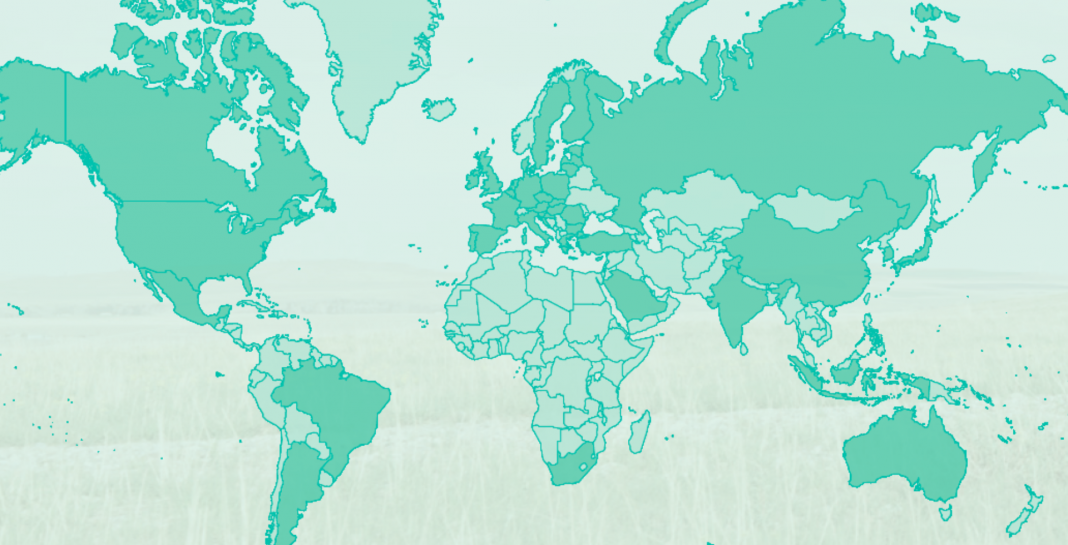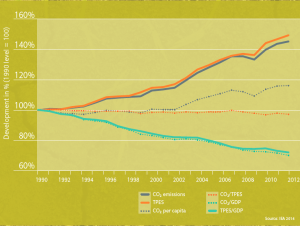G20 countries represent two thirds of the world population, and four fifths of global economic output, as measured by gross domestic product (GDP). Collectively, these countries currently emit three quarters of global annual greenhouse gases (GHG). Average per capita GHG emissions in G20 countries are nearly 11 tonnes of carbon dioxide equivalent (tCO2e). To keep global average warming below 2 degrees Celsius (2°C), global average per capita emissions – not just of the G20 – should be around 1-3 tCO2e, by 2050.
Most of the world’s top 20 annual GHG emitters are G20 countries. That is unsurprising, given their large economic size. However, some of these countries would not appear on a top-20 list of the world’s biggest cumulative emitters. And fewer than half would appear on a top-20 list of the world’s biggest per capita emitters. Emerging economies, for example, still have smaller per capita emissions than most industrial nations.
There are good reasons to draw attention to the climate mitigation action of the G20. Because of their collective size, it is vital that G20 countries reduce their per capita emissions to the safe range mentioned above, even though this would be insufficient on its own to tackle climate change. Because of their enormous political and economic power, these countries help determine the dynamics of the global economy. For example, much technological innovation arises from within the G20. And their share of global trade is even higher than their share of the world economy. Collectively, G20 countries drive the global trend in greenhouse gas emissions, evening out structural economic changes which may shift emissions one way or another in individual nations.
The necessity for average per capita emissions to fall to 1-3 tCO2e follows from climate science. However, this prescription does not, on its own, translate into fair contributions across individual nations. A thorough comparison of the climate mitigation action of G20 countries is a vital precondition for stimulating national debates about what is fair and possible. A transparent comparison of climate action will inform such debate, hold governments to account, and help the world understand what it would take to avoid dangerous climate change. A comparison of climate action across nations must consider a range of criteria: the historical development of emissions; the capacities and capabilities of countries; indicators of decarbonisation, such as the development of renewable energy, and carbon and energy intensity; the national and international climate policy performance of governments; and policy ambition, as expressed in countries’ Intended Nationally Determined Contributions (INDCs), in the context of the globally agreed 2°C target.
Reviewing the trajectory of global emissions over the last 25 years makes sobering reading. In the space of a quarter of a century, G20 carbon dioxide (CO2) emissions have increased by nearly 50%, with faster growth in the second half of this period. Per capita emissions have grown less strongly, by about 18%, reflecting population growth.
Two indicators have fallen by more than 25%, namely carbon and energy intensity, defined as CO2 emissions per unit of primary energy supply, and primary energy supply per unit of GDP. This shows that energy has been used more efficiently to produce goods and services, and that relatively less CO2 was emitted to produce energy. Because global GDP has grown strongly in the last 25 years however, the overall effect has still been a big increase in emissions.
If the world continues along its present path, rising emissions will take the global average temperature far above 2°C, compared with preindustrial levels. The Intergovernmental Panel on Climate Change (IPCC) has highlighted this danger. Similarly, parties of the United Nations Framework Convention on Climate Change (UNFCCC) have recognised the need for urgent action, at their annual global climate conferences.
Parties to the UNFCCC comprise almost every nation on Earth. Aware of the urgency to cut GHG emissions, they have prepared new pledges for climate action, called Intended Nationally Determined Contributions (INDCs). These INDCs will form the centrepiece of a new global climate agreement, which the world is expected to reach at a summit in Paris at the end of this year.
The INDCs are a major step forward. Never before have so many countries committed to take action on climate change, and published such detailed pledges for public scrutiny. Collectively, the INDCs will slow global growth in annual emissions, future review processes have the potential to strengthen the ambition. As the analysis of Climate Action Tracker (CAT) shows, even if these plans were fully implemented, they would still lead to an increase in global temperature of 2.7°C by 2100 . The longer it takes to mobilise the necessary ambition to keep global average warming below 2°C, the more difficult this target will become, requiring ever steeper, more challenging emissions reductions.
However, while these numbers are sobering, there are strong indications that G20 countries are reaching a turning point.
In 11 of G20 countries, per capita GHG emissions are now on a downward path. Renewable energy is continuing its strong growth worldwide. Costs have fallen sharply, and parity with traditional forms of energy is in sight, or already reached. Renewable energy sources are also helping to bring power to the millions of people who do not have access to electricity, where off grid renewable power can be installed faster and cheaper than a grid connection. Climate legislation has been introduced in many countries and targets have been strengthened over time. Increasingly, there is knowledge sharing and collaboration over policies to promote renewable power, energy efficiency and carbon pricing. A substantial number of countries and regions have introduced carbon markets. Climate mitigation action is increasingly seen not as a cost, but a necessary investment in the future, which brings multiple other benefits.
In an important demonstration of the cumulative effect of these developments is that according to the International Energy Agency energy related emissions did not grow in 2014. Such a reversal of GHG emissions growth was previously seen only during periods of economic downturn. This time, it seems that climate policy is working. More ambition is needed, but there is room for hope and optimism.








